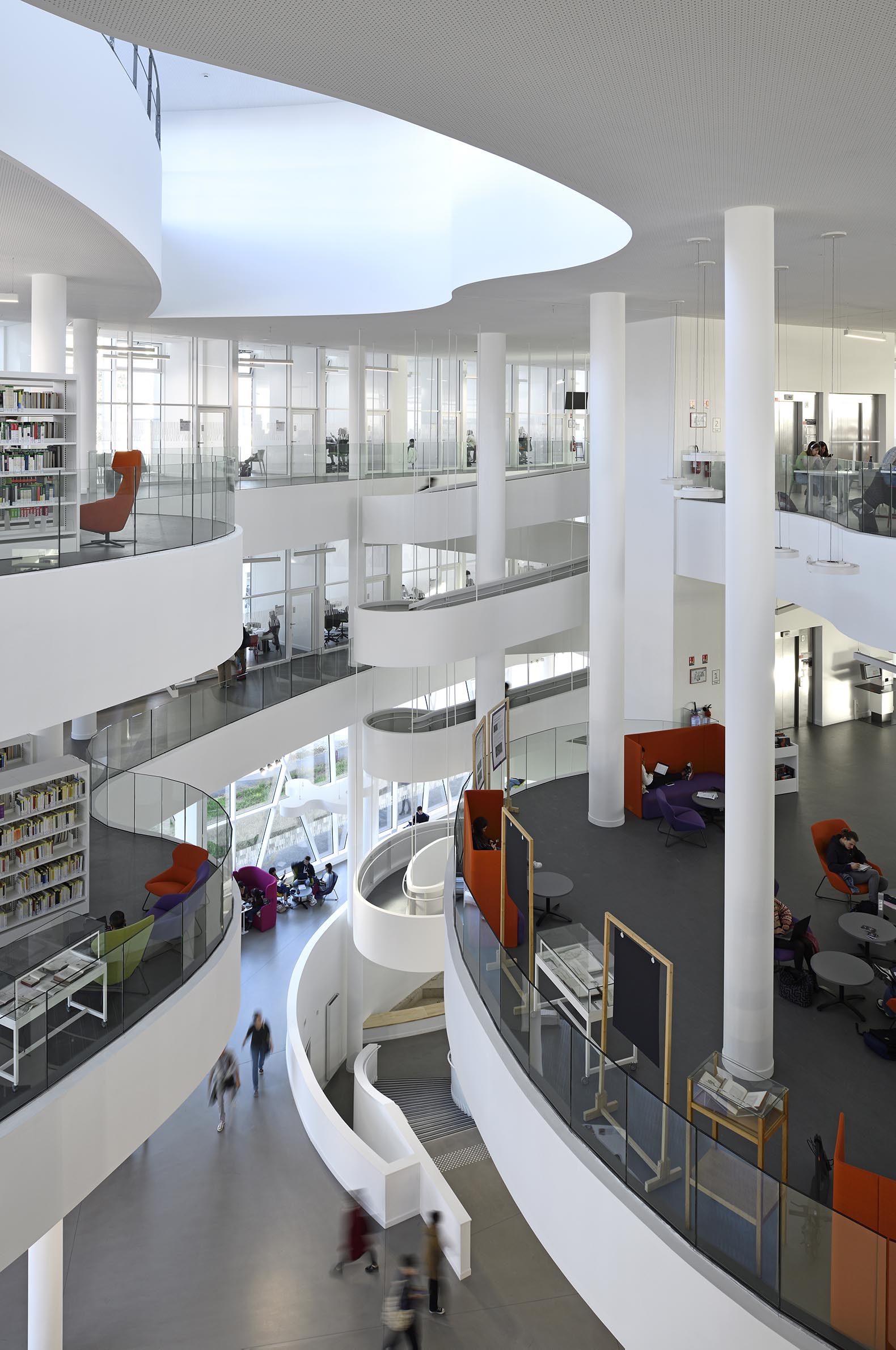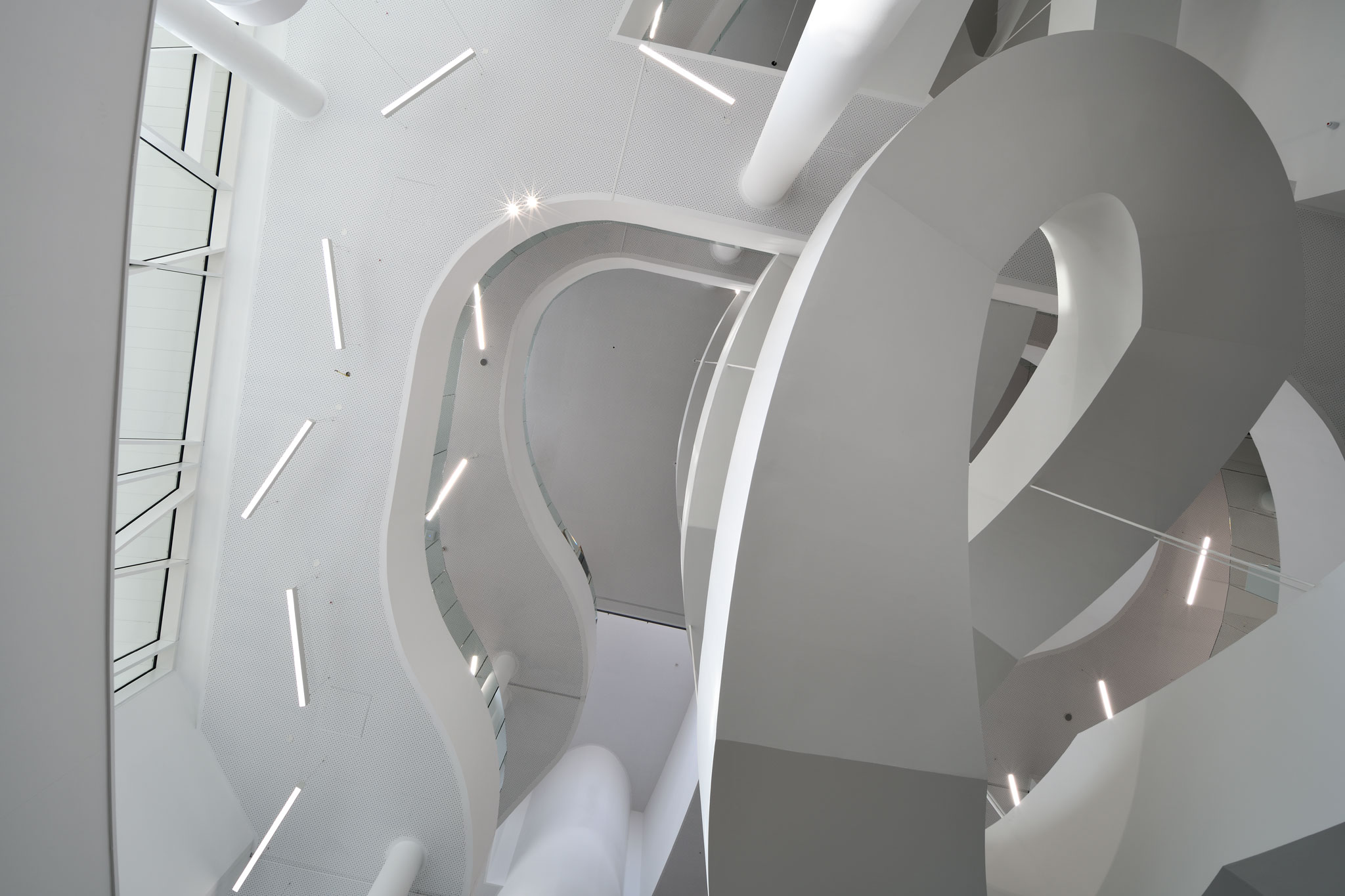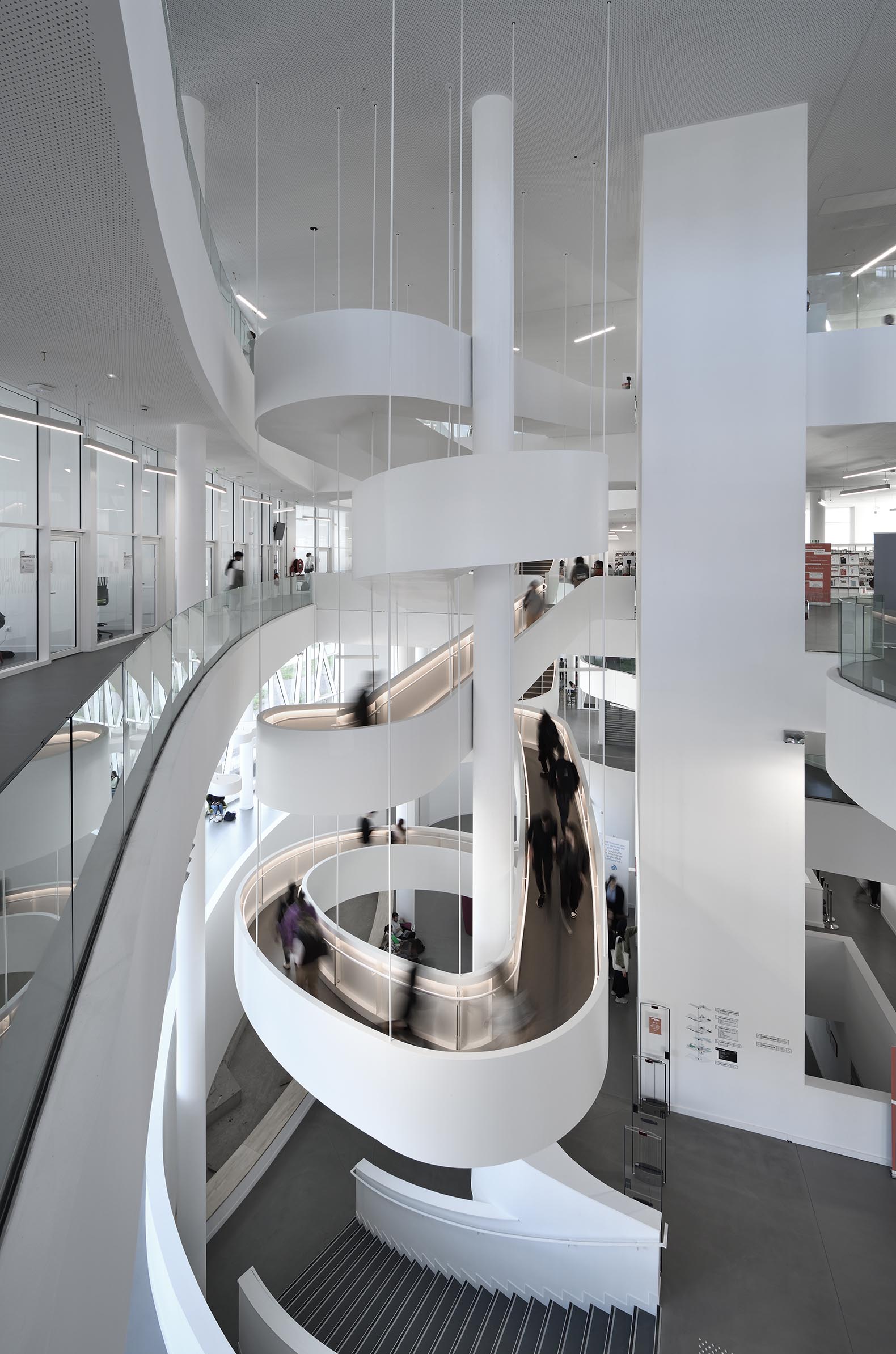The rest displays a program of administrative offices, training and group work rooms, a sound library, offices for doctoral students, a Ruche space to facilitate collaborative work, the central printing press on campus, offices for associations and spaces for partners, an assembly hall and cafeteria... To which are added the seven kilometres of shelves in the basement that are used to store books.
From an urban point of view, the façade is a fluid element, a set of "kinetic veils" that give a changing image depending on where it is observed from and it is also an interesting exercise in light control inside. The cantilever of the first and second floors provides shade and controls the transparency of the ground floor, designed to be an open-element that connects with the city. On the upper floors with large 'brise-soleils' oriented according to the path of the sun, they protect the glass facades and filter direct sunlight, while guaranteeing views of the city. Large 'kinetic veils' give the project its ever-changing forms throughout the day.

Le Studium learning center by Jean-Pierre Lott Architecte. Photograph by Christophe Bourgeois.
Project description by Jean-Pierre Lott Architecte
The site
The Studium project grew out of a desire on the part of the University of Strasbourg to equip itself with a different sort of building, at once a library and a student union building, in the vein of a Learning Centre. More than just a library, it is a third place, designed to foster sociability and sharing.
The building’s spaces also meet the expectations for current ways of working. Users require both formal and informal spaces. In addition to traditional reading rooms, they expect modular rooms with easy-to-move furniture as well as rooms dedicated to working in groups where silence is not required.
The Learning Centre concept comes to us from the English-speaking world. At the entrance to these new-generation libraries, we often find a dining area with periodicals and an auditorium, features designed as incentives for the public to cross the threshold of the Studium, where they will be able to enjoy a range of services grouped under the same roof.

Le Studium learning center by Jean-Pierre Lott Architecte. Photograph by Christophe Bourgeois.
A signal building for the campus
Extending along the Boulevard de la Victoire, at the interface between the historic centre and the Campus de l’Esplanade, the project marks the entrance to the campus from the city, being the first building visitors see.
This exceptional urban situation, a given aspect of the project in addition to the brief itself, is a powerful signal in the cityscape, marking the presence of the university.
From an urban point of view, the project we propose has two faces: a largely transparent ground floor, inviting passers-by to enter the facility, resting atop which is the main body of the building, with its sinuous forms expressing lightness and movement.
Beyond this image, the composition fulfils the requirements of the brief with regard to the spaces that comprise it.
Thus, the transparent podium overlooking the public space offers a view of the ground floor, the lobby, the Student Union and the cafeteria.
On the upper floors, we find the rooms containing the stacks of collections and reading rooms organised on two levels, where much attention is paid to details of comfort and fluidity – symbolised by the curves.
The architecture of the façade flows from the work on light control. The cantilevered floor blocks direct sunlight: large sunshade brise-soleils protect the glazed bays and filter natural light. Their orientation is based on the course of the sun in order to ensure that each space is protected from direct sunlight, whilst guaranteeing the required amount of natural light and views overlooking the city.
The great kinetic veils give the project its constantly changing forms. Depending on the natural light, and the location of the building, whether it is daytime or nighttime, the building’s appearance is transformed.

Le Studium learning center by Jean-Pierre Lott Architecte. Photograph by Christophe Bourgeois.
Light and mobility
The design and organisation of spaces meet two essential requirements for a functioning library:
- Control of light and its quality in interior spaces,
- Ease of movement and the quality of mobility throughout the building.
Once inside, visitors find themselves in a vast atrium flooded with light from above, which serves to balance the natural light penetrating the façades and filtering into the reading rooms. This atrium provides a view of all the activities in the building.
The atrium is characterised by the presence of a grand ramp and a bank of stairs and lifts that organise user flows throughout the building. The absence of corridors on the floors above ensures optimal diffusion of natural light and the grand ramp enhances the overarching concept of promenade and contemplation.
A high-performance bioclimatic approach
Commitment concerning the construction system and characteristics thermal. The project involves ambitious goals aimed at controlling the consumption of utilities, ensuring user comfort and the quality of ambience (thermal, visual, etc.).
With these aims in mind, we implemented, from the initial sketch, a bioclimatic design approach. It involved developing an architectural position favouring passive solutions consistent with the thermal loads to which the building is subject. The strategy chosen consists of sequential treatment of the three major factors contributing to the building’s overall energy performance by:
- Seeking energy savings: building morphology, bioclimatic layout, the performance of the skin, reduction of needs (lighting, ventilation, hot water, etc.), passive solutions, etc.,
- Seeking energy efficiencies: Choice of high-performance systems, high yields, functioning as closely as possible to needs (servo system), easy upkeep, durability, consumption monitoring and detection of malfunctions,
- Using renewable energy: Analysis of solutions with regard to the project’s consumption profiles and the site’s potential (heat pump using the water table).














































